




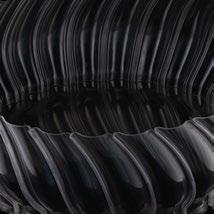



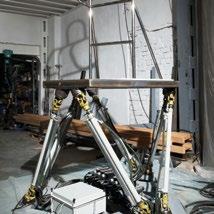























InoAcademy was established in April of 2021 and consists of 16 innovative products created by 14 young design entrepreneurs from Vilnius Academy of Arts (Lithuania). The selected designers work in the realms of material, sustainable, social, and industrial design. The aim of the project is to increase the commercialisation of knowledge and technology transfer at Vilnius Academy of Arts. of Arts and the national and European Union strategic challenges and goals of the innovation sector.
During the course of the project, designers’ products were successfully exhibited at prestigious Milan, Dutch and Stockholm entrepreneurship skills at Iena and Medica International Trade Fairs.
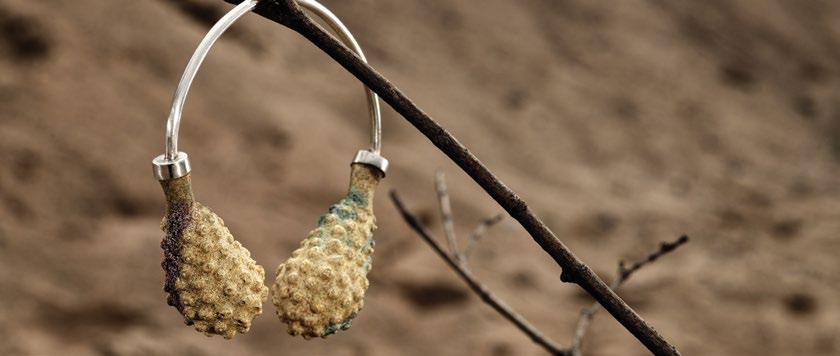
The jewellery collection analyses the relation between carbonate-class minerals calcite, aragonite, dolomite and hen eggshells. The chemical composition of these minerals almost perfectly matches that of eggshells found in most household environments.
The eggshell is composed almost entirely of calcium and magnesium carbonates, and the chemical composition of the selected carbonate-class minerals is dominated by this particular inorganic salt. Jewellery is made with these new eco-friendly and aesthetically pleasing stones that promote zero-waste policy and thus become a substitute for precious stones in jewellery and design.
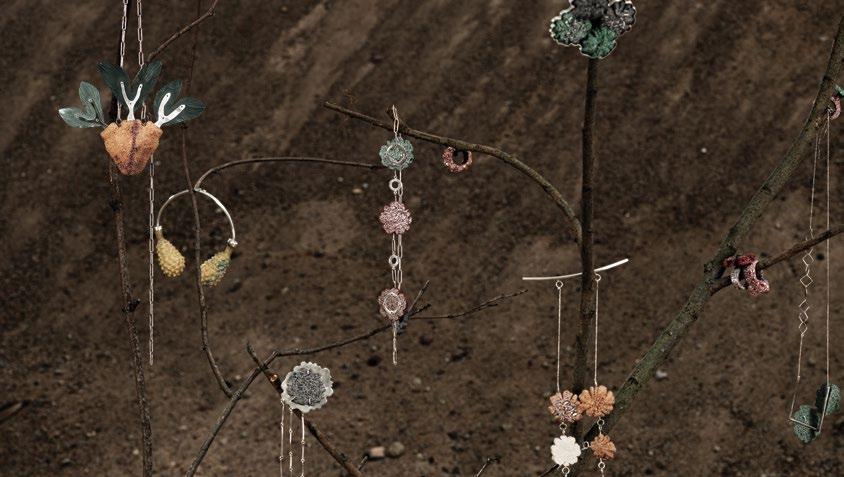

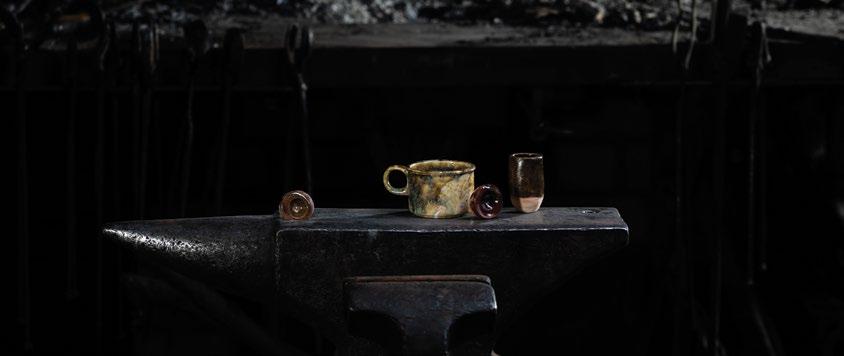
This project aims to create sustainable protective and decorative glass coatings - glazes for ceramics and enamel for metals. The main goal is to create a reliable and durable product in an interdisciplinary manner mainly consisting of glass waste and cogeneration plant byproducts - slag and bottom ash.
The product formulation takes into account the use of additional or pigments, and their safety for the environment and the user. Solutions are also being sought to improve and optimize the manufacturing process of the product in terms of time and energy.

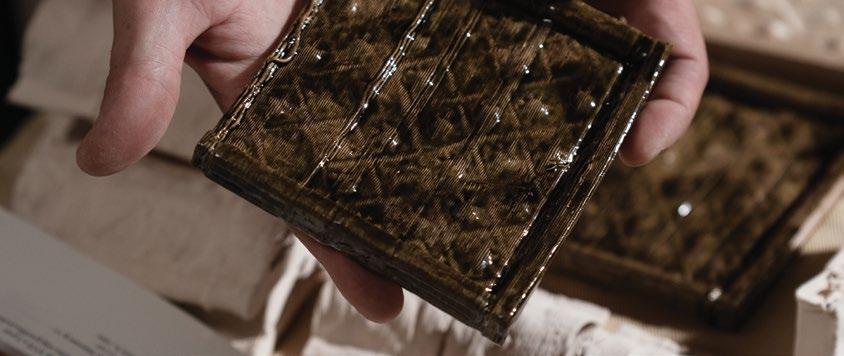
This complex system for reconstruction/development of unique tile designs uses 3D ceramic printing. The technology would allow makers to abandon traditional practices of matrix production, storage and modeling by hand, thus saving all kinds of resources and

The innovation would help to simplify and personalize the product, making it one of a kind.
Product customization is a challenge in today’s tile production, because in traditional practices, the choice is limited by the palette of available matrixes. However, when the 3D ceramic printer is used, it can easily personalize the entire oven - not only choose its colors, as before, but also customize its shape, size, and volume. The method is sustainable and ecological, allowing both to reconstruct old ceramic tiles and to design new ones.
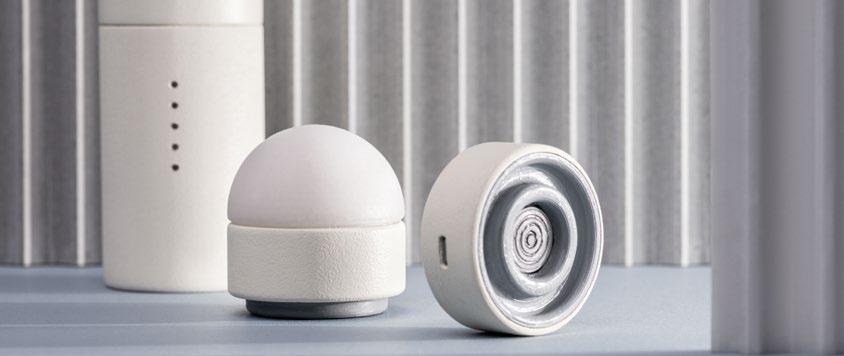
Modular design can help vastly reduce negative environmental impact, e.g. by simplifying remanufacturing processes already at a design stage through modular structures and standard components. The main function of the “Iziconn“ Modular System - modularity - not only helps to solve the problem of unsustainable consumerism, but also facilitates production and adaptation to critical changes in the electronic device market.
Technologically similar analogues of the Iziconn Modular System emphasize modularity only as a possibility to use the same connector, using the full potential of modularity in the design of the product. However, the modularity actually allows the user not only to link the battery module with another module/cell, but also to combine the modules with each other. The Iziconn Modular System allows you to have many different functions in one device, changing and adapting them according to one’s needs.

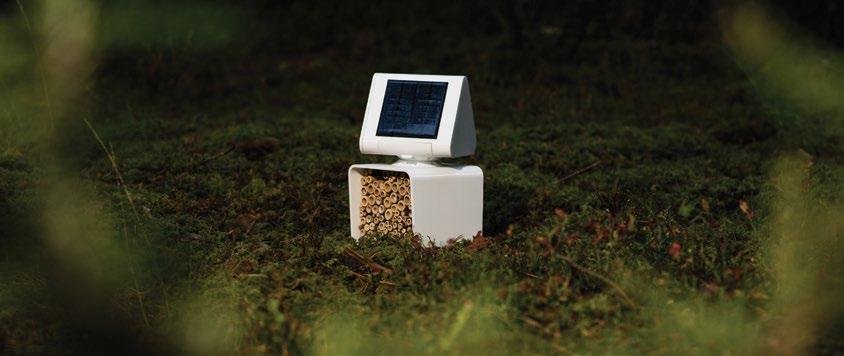 Denis Orlenok
Denis Orlenok
The FlyInn is a unique smart hotel for to promote biodiversity and offers a comfortable stay for insects that play an important role in pollinating plants and naturally killing various garden parasites. The elegant design of the insect hotel is distinguished by clear lines. Its style and functionality means it can be easily integrated into any urban or domestic environment. The modular system allows you to easily assemble modules according to your needs and to attract different insects: bees, bumblebees and others.
Modules can be purchased according to your needs and rearranged to create a unique solution. For the inner used, and the outer box is produced in small quantities on demand. The upper triangular module emits depending on the time of day, temperature and humidity. To reduce the use of single packages, the user is encouraged to regulate the amount of insect-attracting liquid.
FlyInn is a unique educational and place in any backyard!


First-person videos are one of the most effective ways to learn practical skills. They are particularly convenient when there is no possibility to show the process or repeat it physically.
Edurega is a headset that allows you to demonstrate your practical skills from a personal perspective. To share your knowledge, just make highquality video and audio recordings using the device. Others can gain access to the recordings and learn by viewing them multiple times.
Unlike its analogues, the headset, together with the online platform, allows you to create engaging educational content for remote learning and help improving practical skills. For businesses, it offers an innovative way to train employees and increase their competence, and for educational institutions it’s a handy way to teach students practical skills.
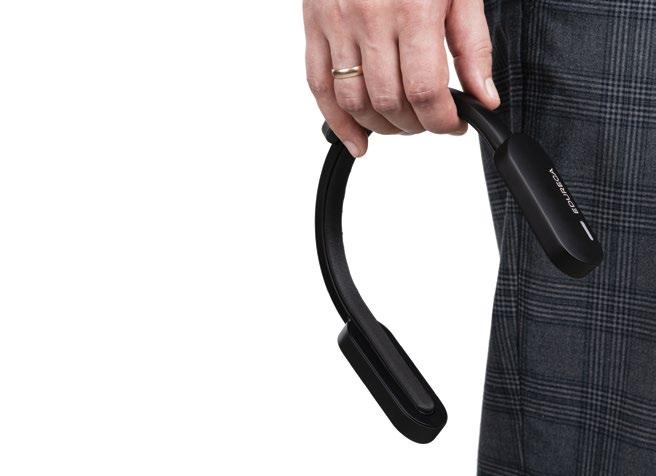
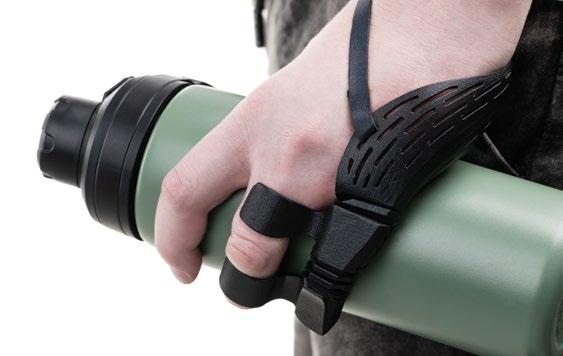 Simonas Milišauskas
Simonas Milišauskas
System for fully or partially which aims to partially restore follows 3D scanning - computer driven generation - 3D printing manufacturing model for minimizing prosthesis adaptation and price.
Additionally, such a manufacturing process allows the creation of a product, which, instead of imitating reality, functions as personal style detail. The goal of the system is to create economical prosthetics, reachable for a wide spectrum of contributing to their psychological well-being.
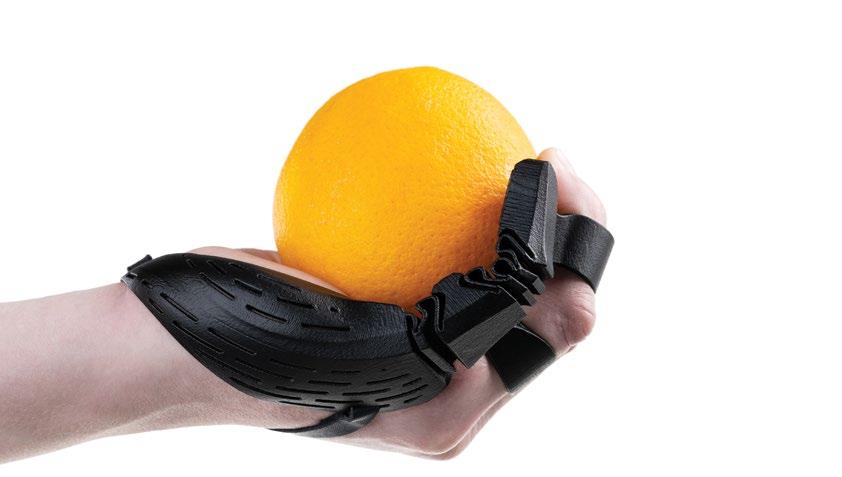

Today we face a huge problem of synthetic material waste, because disposable or short - term products are made from durable materials. This also creates large economic losses due to raw and non - recyclable resources. Using the special material processing method, a bio-foam material has been created that can be used for a new type of biodegradable packaging products. Algae-based packaging prototypes aim to at least partially reduce environmental pollution with solid waste - the material is completely organic and compostable, because it is made of only natural ingredients. Even if this packaging has been discarded as waste, due to natural processes and micro-organisms it will again become a part of nature.
The extraction of the resources required for the production of the packaging does not compete with inhabited and cultivated land areas, which are very important for the cultivation of food resources. The primary binding material for bio-foam packaging is derived exclusively from renewable marine and oceanic resources and algal waste in coastal regions.
By using the product together with the biodegradable algae-based packaging, the consumer would not feel guilty about global environmental pollution, so this product improves the psychological health of consumers, thus creating additional emotional and psychological value and reducing the environmental impact of solid waste pollution.
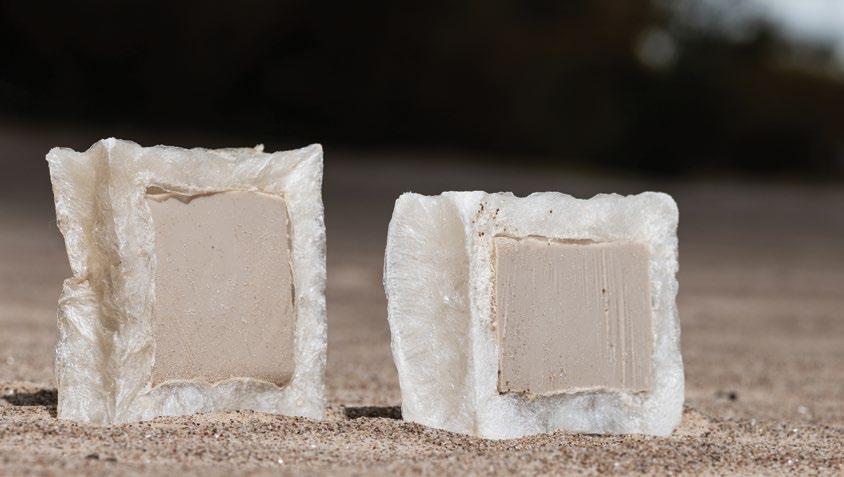
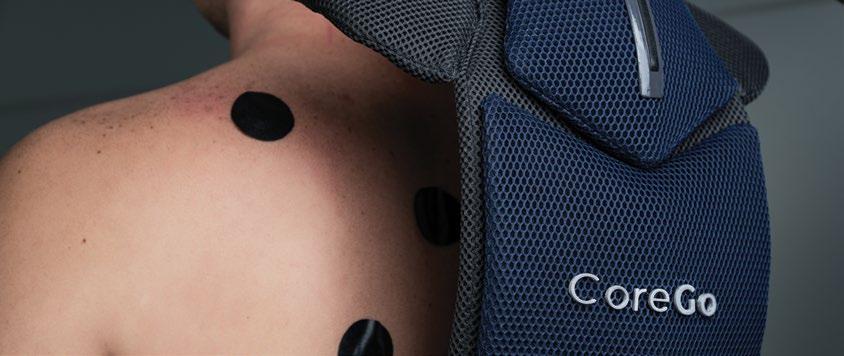
CoreGo posture corrector is designed to solve one of the most common medical problems in the world - back pain. Its special feature is the hydraulic back straightening system, which gradually corrects the posture and prevents sudden movements that could cause harm. In addition, a new magnetic fastening technology is used, allowing the user to move easily and feel unrestricted.

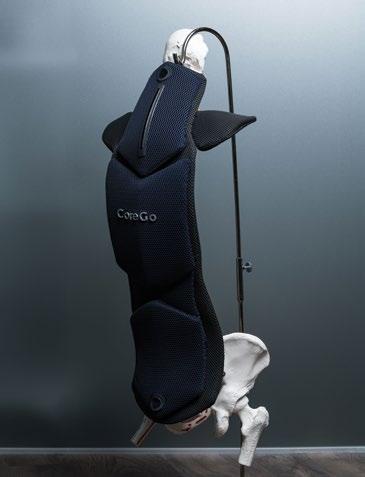
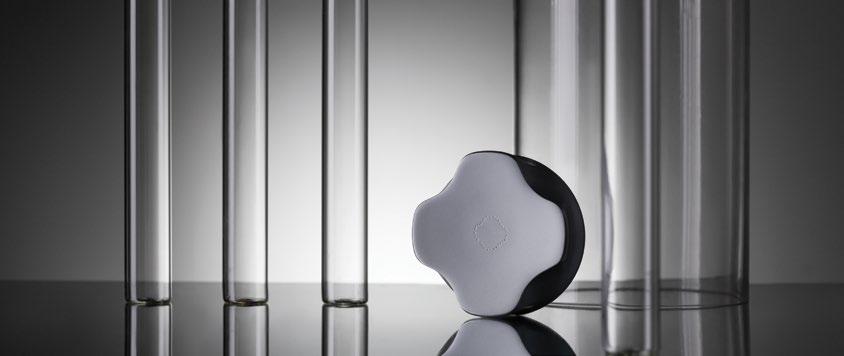 Jonas Rudis
Jonas Rudis
Human error is something we all share. It happens in every country, it also happens in medical facilities. According to statistical data, in Europe 8–12 percent of all hospitalizations are affected by human error that can possibly endanger the patient’s life. In 2018 a survey conducted by Merritt Hawkins found that 78 percent of doctors in medical institutions were directly affected by some human error, 18 percent noted that the error was serious and affected the
health of their patients. 11 percent of respondents admitted that due to this error, inappropriate medical treatment was prescribed.
Wave H is a device based on an
offers medical institutions the automation of auscultation and diagnosis, possibly reducing the risk of human error and the number of patient visits to diagnostic institutions, as well as saving medical resources.

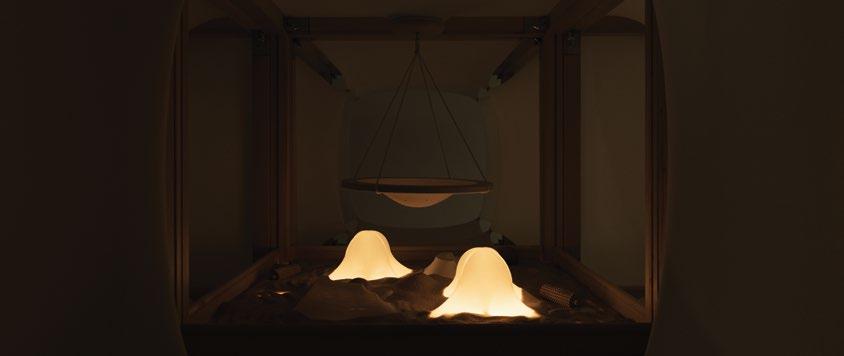
When implementing policies for inclusive education and employment of autistic people, it is important to reevaluate the environment and the interaction between different neurotypes. The KUKUBU project has a goal to understand the autism spectrum disorder (ASD), the worldview and perspective of an autistic person. It is done through observation and interviews of individuals, as well as virtual communities of autistic people. After formulating good design criteria and taking into account the
characteristics of an autistic person’s thinking, communication, and sensory systems, the KUKUBU space was designed to communicate and rest, introducing neurotypical children to the world of their neurodiverse peers. The KUKUBU space could become a bridge establishing contact with an autistic child. The KUKUBU prototype consists of wooden cubes covered with elastic fabric, designed to hide or connect into closed structures for communication — not through verbal or body language, but through shared sensory experiences.

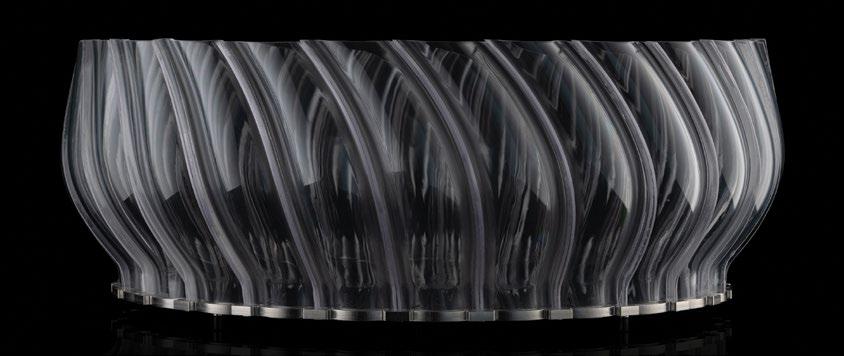
Cerebral Spinner is a highbrow amusement ride. The machine is a circular structure containing a spinning platform that can accommodate a group of people around its spinning centre. Under motion, the spinner is capable of ‘pinning’ thirty people to its circular wall due to the centripetal force. The modular wall consists of an array of curvilinear elements, shaped in such a way that, once
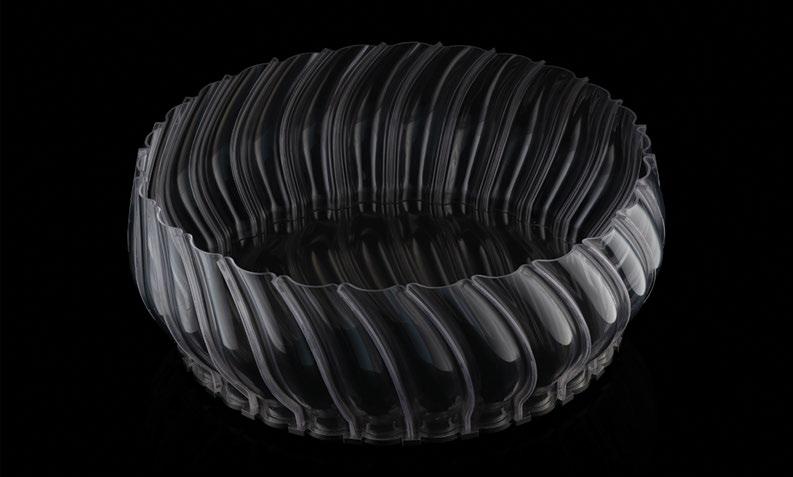
at full speed, the riders’ bodies and then suspend in midair. The spectacle is clearly visible from any angle as the walls are transparent. Such a venue could be used as a high g-force stage, a revolving a lecture theatre or a public kinetic square or portable lab for studying the effects of heightened gravity upon thinking, daydreaming and pleasure.



These panels are made of ecologically produced, easily recycled, selfdegrading materials for the furniture industry. Their use makes it possible to produce ecological, sustainable and high-quality furniture and to raise the reputation of a sustainable company participating in the circular economy.
As deforestation concerns increase and requirements for carbon emission become stricter, effectively banning plastics, alternatives made from renewable raw or recycled materials become more and more popular. These panels are made from the
because much of the stems are burned as fuel or buried in the ground.
The panels are made via the process of hot pressing a mixture of plant
locally-sourced materials such as self-glue with cellulose, a process that is enhanced by special technological completely ecologically clean, local natural resources are used, and wood is preserved. The material is suitable for mass production.
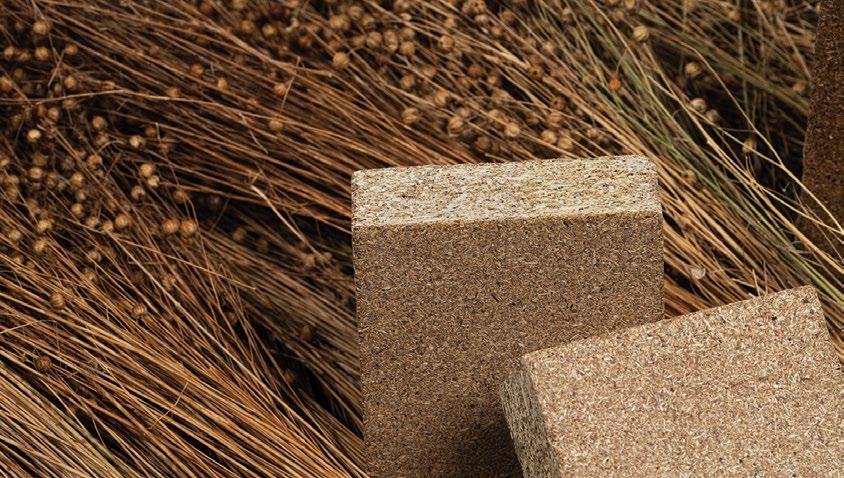

This product is completely natural and sustainable, made from natural biodegradable materials and renewable sources. As a result, it is easily recycled. It respects the principles of a sustainable economy, solves the problem of furniture disposal, helps to stop negative ecological factors, and contributes to the promotion and implementation of sustainability policy in Lithuania and Europe.
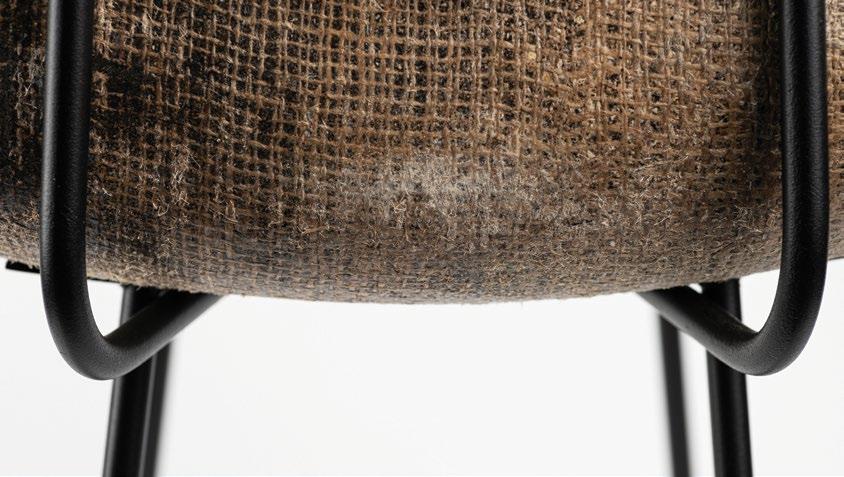
The product respects nature and the environment and uses raw materials of Lithuanian origin. This guarantees the user’s emotional satisfaction.
woody particles, only biological binders and molding technologies are used, employing the ability of cellulose bonds.

Overconsumption and the stillexisting linear economic principle led to the research and development of this eco-themed project. Based on the prevailing principle of the linear economy (take-make-dispose), furniture is made from cheap synthetic, environmentally harmful materials. MDF, MDP, LMDP, FMDP panels, mostly used in the furniture industry, are made from wood waste or wood resins using pressure and heat.

An experimental lab study found that milk is the most suitable product for developing biomaterials due to
its physical properties. This way, the waste of food is avoided and a completely new product is created using milk that is no longer suitable for consumption.
This new biomaterial promises a possibility to use surplus dairy products for the production of alternative materials and their successful integration into furniture design solutions. The milk-based biomaterial can be used as a coating for chipboard and other panels. And by using agricultural materials, it can also be used as a binding material in the production of panels.

REGOS (Robotic EGOmotion Simulator) is a new artistic toolkit for reproducing a wide range of motion experiences for both artists and audiences. Based on a mechanism capable of conveying all linear and rotational movements, REGOS could be used in theatre, dance, music shows, cinematic effects, VR, entertainment, but also for simulation and research. REGOS has been specially engineered with the artist as both a customer and an operator in mind. It features a custom-tailored motion control
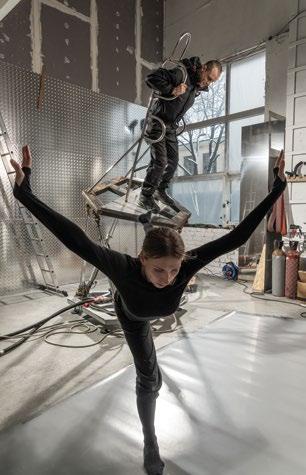
software that allows a non-expert to compose, edit, record and play motion scores with precision and ease. In addition to its high performance, the simulator is also range of movements with additional motion devices such as a spinning platform, or by connecting to other devices. All of this enables seamless integration of the machinery into your set design. The machinery has been engineered to disappear not only visually, but also acoustically to allow motion art speak for itself.

Organiser: Vilnius Academy of Arts
Vilnius Academy of Arts (VAA) was established in 1793 and is the oldest art university in the Baltic countries. It offers study programmes in all three study cycles in the areas of art, design, architecture, and art theory and history.
The Academy consists of four campuses, situated in the cities of 1500 students.
Design Innovation Centre:
The Design Innovation Centre at Vilnius Academy of Arts (VAA) is a centre of excellence established in 2007. The division provides for the commercialization, development and renewal of new products, incubation activities and promotes design in society. Since 2016, the Design Innovation Centre has been responsible for the intellectual property created at the academy. In 2018, divisions
In 2019, the State Patent Bureau of the Republic of Lithuania granted the VAA Design Innovation Centre the status of a PATLIB centre. In 2022 the centre became a member of BEDA (The Bureau of European Design Associations).
www.inoakademija.lt
Facebook: Dizaino inovaciju centras
Instagram: designinnovationcentre